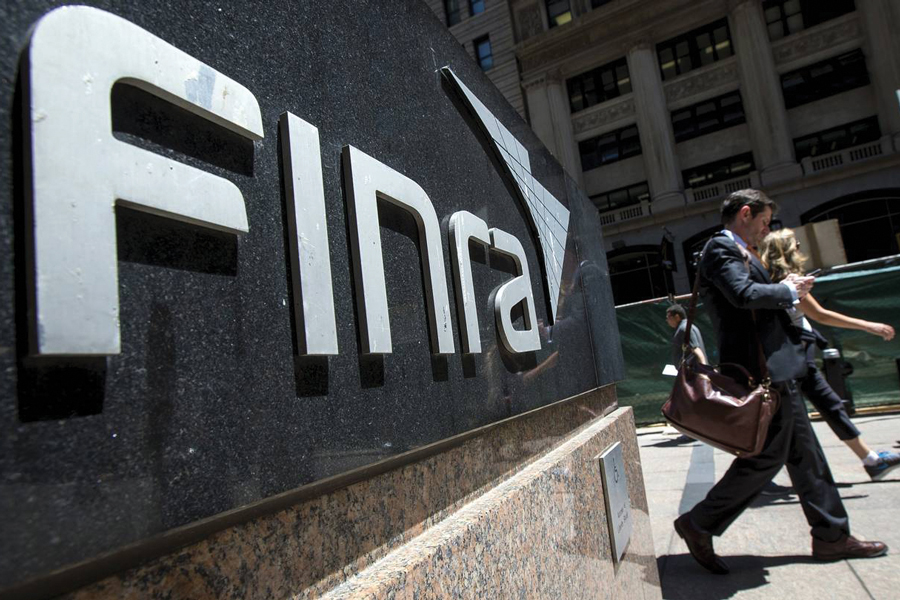

The Financial Industry Regulatory Authority Inc. Wednesday released its 2019 annual financial statement, which shows that total compensation and benefits for its staff rose last year to $758.5 million compared to $688.7 million in 2018, an increase of 10.1%.
Meanwhile, the primary regulator of more than 3,000 broker-dealers said that it was preparing a proposal, to be filed with the Securities and Exchange Commission at some later date, to raise regulatory fees. The Finra report noted that fees have been static for several years.
Compensation for Finra senior management and staffers, as well as any increase in the regulator's fees, are highly sensitive issues for brokerage firm executives, who routinely complain that the securities industry is becoming increasingly expensive and more difficult for small firms to operate in.
Finra CEO Robert Cook has been trying to fight that perception, notably through a 2017 initiative known as Finra 360, a comprehensive review of the self-regulatory organization's operations.
The increase in compensation for Finra's staff of 3,400 resulted from voluntary retirement program severance, employee merit increases and a boost for employee incentive compensation, Finra reported, along with perks for senior staff and officers that included expenses related to the deferred compensation plan and the supplemental defined-contribution plan.
Finra issued a budget summary in May that revealed the plans for a regulatory fee increase, which will not take effect until at least 2022 and will be phased in over several years.
"We do not plan to increase regulatory fees in 2020, marking our seventh consecutive year without a fee increase," according to the annual report. "As noted in the budget summary, we are preparing a proposal to raise regulatory fees that will be filed with the SEC."
For several years, Finra has been living off its hump.
It has relied on its reserves to fund budget deficits instead of increasing member firm fees, it noted in the May budget summary. It will continue to draw down reserves and eventually reach a target reserve of one year of operating expenses, at which point it will manage expenses and then eventually raise regulatory fees.
Another sensitive industry issue involves Finra generating revenue from fines it imposes on broker-dealers. But Finra reported that revenues from fines dropped precipitously, to $39.5 million last year from $61 million in 2018. That's a decrease of 35%.
Finra's overall expenses grew last year by $120 million, hitting $1.095 billion, up from $975 million in 2018. That's an increase of 11%.
Finra's net revenues were $938.5 million in 2019, an increase of 2.2% when compared to 2018, when it reported $918.5 million in net revenues.

While industry statistics pointing to a succession crisis can cause alarm, advisor-owners should be free to consider a middle path between staying solo and catching the surging wave of M&A.

New joint research by T. Rowe Price, MIT, and Stanford University finds more diverse asset allocations among older participants.

With its asset pipeline bursting past $13 billion, Farther is looking to build more momentum with three new managing directors.

A Department of Labor proposal to scrap a regulatory provision under ERISA could create uncertainty for fiduciaries, the trade association argues.

"We continue to feel confident about our ability to capture 90%," LPL CEO Rich Steinmeier told analysts during the firm's 2nd quarter earnings call.
Orion's Tom Wilson on delivering coordinated, high-touch service in a world where returns alone no longer set you apart.
Barely a decade old, registered index-linked annuities have quickly surged in popularity, thanks to their unique blend of protection and growth potential—an appealing option for investors looking to chart a steadier course through today's choppy market waters, says Myles Lambert, Brighthouse Financial.
